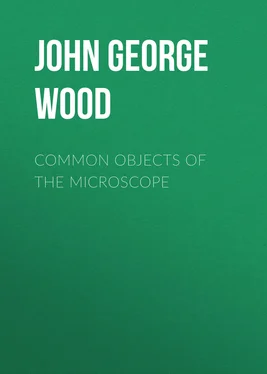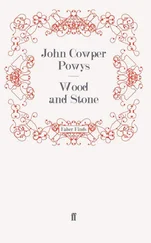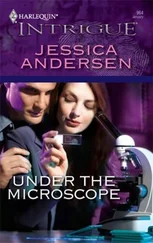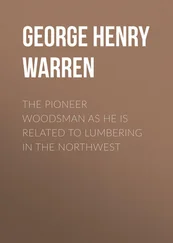John George Wood - Common Objects of the Microscope
Здесь есть возможность читать онлайн «John George Wood - Common Objects of the Microscope» — ознакомительный отрывок электронной книги совершенно бесплатно, а после прочтения отрывка купить полную версию. В некоторых случаях можно слушать аудио, скачать через торрент в формате fb2 и присутствует краткое содержание. Жанр: foreign_prose, foreign_antique, на английском языке. Описание произведения, (предисловие) а так же отзывы посетителей доступны на портале библиотеки ЛибКат.
- Название:Common Objects of the Microscope
- Автор:
- Жанр:
- Год:неизвестен
- ISBN:нет данных
- Рейтинг книги:4 / 5. Голосов: 1
-
Избранное:Добавить в избранное
- Отзывы:
-
Ваша оценка:
- 80
- 1
- 2
- 3
- 4
- 5
Common Objects of the Microscope: краткое содержание, описание и аннотация
Предлагаем к чтению аннотацию, описание, краткое содержание или предисловие (зависит от того, что написал сам автор книги «Common Objects of the Microscope»). Если вы не нашли необходимую информацию о книге — напишите в комментариях, мы постараемся отыскать её.
Common Objects of the Microscope — читать онлайн ознакомительный отрывок
Ниже представлен текст книги, разбитый по страницам. Система сохранения места последней прочитанной страницы, позволяет с удобством читать онлайн бесплатно книгу «Common Objects of the Microscope», без необходимости каждый раз заново искать на чём Вы остановились. Поставьте закладку, и сможете в любой момент перейти на страницу, на которой закончили чтение.
Интервал:
Закладка:
Fig. 13.
The beginner is strongly recommended to practise himself in this from the outset. Even a rough sketch is worth pages of description, especially if the magnification used be appended; and even though the worker may be devoid of artistic talent, he will find that with practice he will acquire a very considerable amount of facility in giving truthful outlines at least of the objects which he views. Various aids have been devised for the purpose of assisting in the process. The simplest and cheapest of these consists of a cork cut so as to fit round the eye-piece. Into the cork are stuck two pins, at an angle of 45° to the plane of the cork, and, the microscope being placed horizontally, a thin cover-glass is placed upon the two pins, the light being arranged and the object focused after the microscope is inclined. On looking vertically down upon the cover-glass, a bright spot of light will be seen, and as the eye is brought down into close proximity with it the spot will expand and allow the observer to see the whole of the image without looking into the microscope. If a sheet of paper be now placed upon the table at the place occupied by the image so projected, the whole of the details will be clearly seen, as will also the point of a pencil placed upon the paper in the centre of the field of view; and, after a little practice, it will be found easy to trace round the chief details of the object. Two points require attention. The first is that if the light upon the paper be stronger than that in the apparent field of the microscope, the image will not be well seen, or if the paper be too feebly lighted, it will be difficult to keep the point of the pencil in view. The light from the microscope is thrown into the eye, and the view of the image upon the paper is the effect of a mental act, the eye looking out in the direction from which the rays appear to come. The paper has therefore to be illuminated independently, and half the battle lies in the adjustment of the relative brightness of image and paper. The second point is, that it is essential to fix one particular point in the image as the starting-point of the drawing, and this being first depicted, the image and drawing of this point must be kept always coincident, or the drawing will be distorted, since the smallest movement of the eye alters the relations of the whole. The reflector must be placed at an angle of 45°, or the field will be oval instead of circular. The simple form of apparatus just described has one drawback, inasmuch as the reflection is double, the front and back of the cover-glass both acting as reflectors. The image from the latter being much the more feeble of the two, care in illumination will do much to eliminate this difficulty; but there are various other forms in which the defect in question is got rid of. The present writer has worked with all of them, from the simple neutral tint reflector of Beale to the elaborate and costly apparatus of Zeiss, and, upon the whole, thinks that he prefers the cover-glass to them all.
A very simple plan, not so mechanical as the last-named, consists in the use of “drawing-squares,” which are delicate lines ruled upon a piece of thin glass, and dropped into the eye-piece so that the lines rest upon the diaphragm of the eye-piece, and therefore are in focus at the same time as the object. By the use of these, in combination with paper similarly ruled, a diagram of any required size can be drawn with very great facility. The squares, if compared with a micrometer, will furnish an exact standard of magnitude for each object-glass employed. The micrometer is a piece of thin glass upon which are ruled minute divisions of an inch or a millimeter. Suppose the micrometer to be placed under the microscope when the squares are in the eye-piece, and it be found that each division corresponds with one square of the latter, then, if the micrometric division be one one-hundredth of an inch, and the squares upon the paper measure one inch, it is clear that the drawing will represent the object magnified a hundred “diameters”; if two divisions of the micrometer correspond to three squares, the amplification will be a hundred and fifty diameters; if three divisions correspond to two squares, sixty-six diameters, and so on. If a draw-tube be used, it will be necessary to know the value of the squares at each inch of the length, if they are to be used for measuring magnification.
CHAPTER III
Examination of Objects—Principles of Illumination—Mirror and its Action—Substage Condenser—Use of Bull’s-eye—Opaque Objects—Photography of Microscopic Objects.
So much depends upon a right method of employing the microscope, as regards both comfort and accuracy, that we propose to devote a little space to the consideration of the subject.
Let us first warn the intending observer against the use of powers higher than are required to bring out the details of the object. Mere magnification is of very little use: it increases the difficulties both of illumination and of manipulation, and, as already said, interferes with that grasp of the object which it is most desirable to obtain. Rather let the beginner lay himself out to get the very most he can out of his lowest powers, and he will find that, by so doing, he will be able far better to avail himself of the higher ones when their use is indispensable.
The essential means to this end is a mastery of the principles of illumination, which we now proceed to describe.
We suppose the microscope to be inclined at an angle of about 70° to the horizontal, with a low-power objective attached to it, a one-inch by preference. Opposite to the microscope, and about a foot away from it, is a lamp with the edge of the flame presented to the microscope, the concave mirror of which is so arranged as to receive the rays from the flame and direct them up the tube of the microscope. Upon the stage is placed a piece of ground-glass, and the mirror-arm is now to be moved up or down upon its support until the ground-glass receives the maximum of illumination, which it will do when the lamp-flame is at one conjugate focus of the mirror and the ground-glass at the other. The focus will not be an image of the flame, but a bar of light.
If an object be now placed upon the stage, instead of the ground-glass, and the objective focused upon it, it will, if the mirror be properly adjusted, be brilliantly illuminated.
It will be understood that every concave mirror has a focus, and converges the rays which fall upon it to this focus, behaving exactly like a convex lens. The principal focus of a concave mirror is its radius of curvature, and this is not difficult to determine. Place side by side a deep cardboard box and the lamp, so that the concave mirror may send the rays back, along a path only slightly inclined to that by which they reached it, to the bottom of the box. The lamp and box being equidistant from the mirror, it is evident that when the mirror forms an image of the former upon the latter equal to the flame in size, we have the equivalent of the equal conjugate foci shown in Fig. 2. Now move the box to the distance from the mirror which corresponds to the distance of the stage of the microscope from the mirror when the latter is in position upon the microscope, and then move the lamp to or fro until the mirror casts a sharp image of the flame upon the bottom of the box, which is not to be moved. The lamp distance so found will be the correct one for working with the concave mirror. The writer is led to lay special stress upon this matter, from the fact that he almost invariably finds that the mirror is arranged to be used for parallel rays, i.e. for daylight, and is therefore fixed far too close to the stage to be available for correct or advantageous working with the lamp, unless, indeed, the bull’s-eye condenser be used, as hereinafter described, to parallelise the rays from the lamp.
Читать дальшеИнтервал:
Закладка:
Похожие книги на «Common Objects of the Microscope»
Представляем Вашему вниманию похожие книги на «Common Objects of the Microscope» списком для выбора. Мы отобрали схожую по названию и смыслу литературу в надежде предоставить читателям больше вариантов отыскать новые, интересные, ещё непрочитанные произведения.
Обсуждение, отзывы о книге «Common Objects of the Microscope» и просто собственные мнения читателей. Оставьте ваши комментарии, напишите, что Вы думаете о произведении, его смысле или главных героях. Укажите что конкретно понравилось, а что нет, и почему Вы так считаете.












